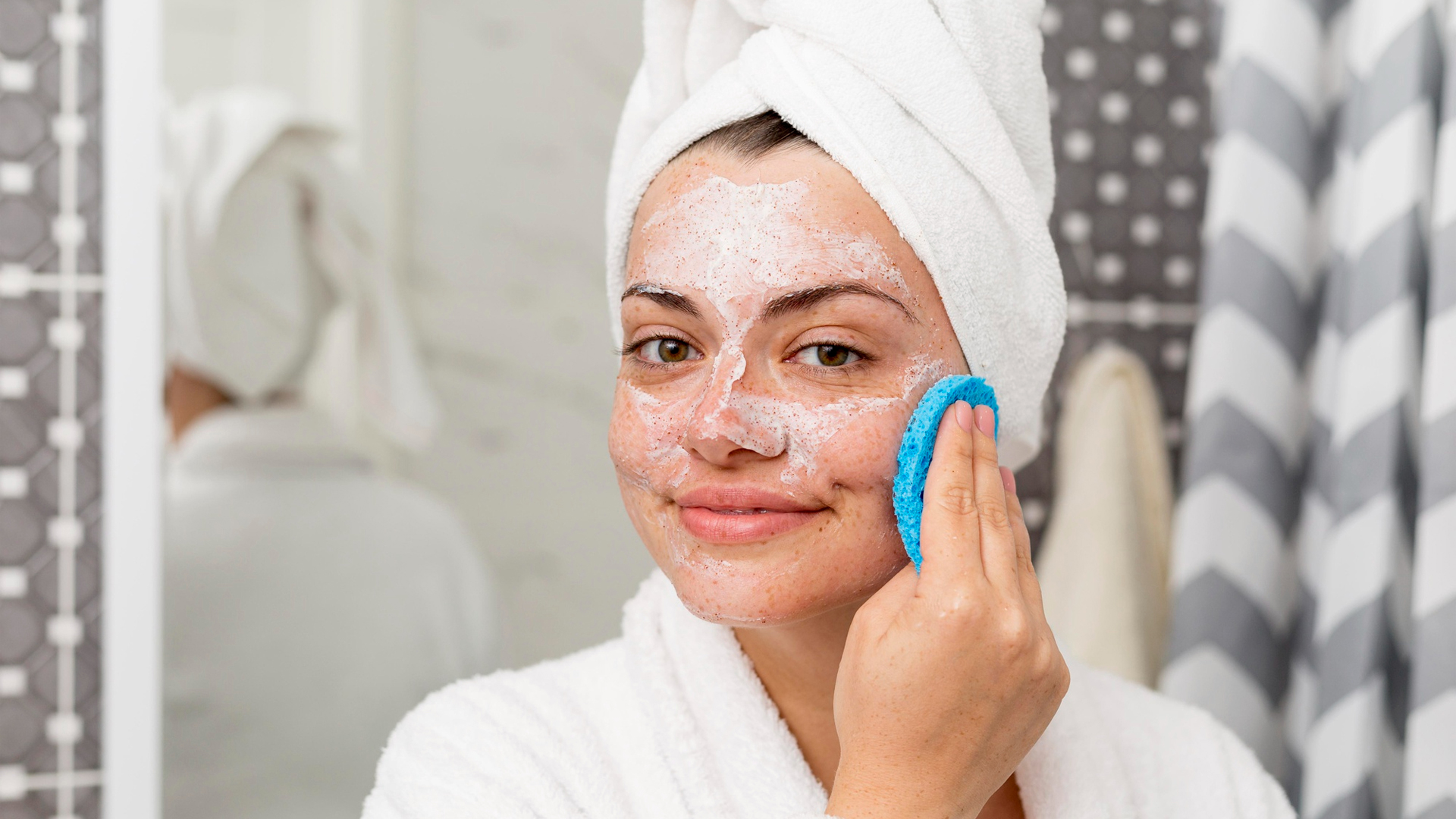Our skin is our body’s largest organ, and it works hard every day to protect us from environmental stressors, pollutants, and UV rays. Yet, how often do we show it the love and attention it truly deserves? If you’re wondering how to take care of your skin, you’re not alone. With so much information out there, it can be hard to know where to start. Fortunately, achieving healthy, glowing skin doesn’t have to be complicated.
Whether you’re looking to establish a skincare routine, tackle specific skin concerns like acne or dryness, or simply maintain a radiant complexion, the key is consistency and the right approach. In this article, we’ll cover the essential steps to care for your skin, from cleaning to moisturizing, and everything in between.
1. Know Your Skin Type: The First Step to Tailoring Your Routine
Before you dive into skincare, it’s crucial to understand your skin type. This will help you select the right products and avoid unnecessary irritation. There are five main skin types:
- Normal Skin: Balanced, not too oily or dry, with few imperfections.
- Oily Skin: Prone to excess oil production, often resulting in shine, enlarged pores, and acne.
- Dry Skin: Lacks moisture and can feel tight, flaky, or rough.
- Combination Skin: A mix of oily and dry areas, typically with an oily T-zone (forehead, nose, chin) and drier cheeks.
- Sensitive Skin: Prone to redness, irritation, and reactions to products.
Once you’ve identified your skin type, you can start building a skincare routine that addresses its unique needs.
2. Cleansing: The Foundation of a Healthy Skin Routine
Cleansing is the most important step in any skincare routine. It helps remove dirt, oil, makeup, and impurities that build up throughout the day, giving your skin a fresh canvas to work with.
How to Cleanse Properly:
- Choose the Right Cleanser: Pick a gentle cleanser suited for your skin type. For oily skin, a gel-based cleanser with salicylic acid works wonders, while dry skin benefits from a hydrating cream or oil-based cleanser.
- Don’t Overdo It: Washing your face too often (especially with harsh cleansers) can strip your skin of its natural oils, leading to dryness or irritation. Cleanse twice a day—morning and night—for the best results.
- Be Gentle: Always use lukewarm water to wash your face, and avoid scrubbing vigorously. A gentle circular motion will do the trick!
3. Exfoliation: Reveal Fresh, Radiant Skin
Exfoliating removes the dead skin cells that can cause dullness and clog pores. When done correctly, exfoliation can brighten your complexion, improve skin texture, and even prevent acne.
How to Exfoliate Properly:
- Physical Exfoliation: Scrubs with fine particles (like sugar or salt) can give your skin an instant smooth feeling. But be careful not to scrub too hard! Overdoing it can cause irritation, especially if you have sensitive skin.
- Chemical Exfoliation: Products with AHAs (alpha hydroxy acids) like glycolic acid, or BHAs (beta hydroxy acids) like salicylic acid, dissolve dead skin cells without scrubbing. These are great for deeper exfoliation, and they can address acne or pigmentation issues.
When to Exfoliate: Aim to exfoliate 1-3 times per week, depending on your skin type. Dry or sensitive skin may only need once a week, while oily skin may benefit from more frequent exfoliation.
4. Toning: Balance and Refresh Your Skin
Toning comes after cleansing and before moisturizing. A good toner helps to restore your skin’s natural pH balance and can target specific concerns like dryness, acne, or redness.
How to Choose the Right Toner:
- Oily Skin: Look for toners with ingredients like witch hazel or salicylic acid to control oil and minimize pores.
- Dry Skin: Opt for hydrating toners with soothing ingredients like aloe vera, rose water, or glycerin.
- Sensitive Skin: Choose alcohol-free toners with calming ingredients like chamomile or calendula to avoid irritation.
How to Apply Toner: After cleansing, pour a small amount of toner onto a cotton pad and gently swipe over your face, or pat it into your skin using your hands.
5. Moisturizing: Hydrate and Protect
Regardless of your skin type, moisturizing is a must. Even oily skin needs hydration. Moisturizers help lock in water, preventing dryness and supporting the skin’s natural barrier.
How to Choose the Right Moisturizer:
- Oily Skin: Go for a lightweight, oil-free gel or a mattifying moisturizer to keep shine at bay.
- Dry Skin: Opt for a rich cream with ingredients like hyaluronic acid, shea butter, or ceramides to deeply hydrate and repair the skin barrier.
- Combination Skin: A balanced, non-comedogenic moisturizer will hydrate without clogging pores in the T-zone.
How to Apply Moisturizer: After your toner or serum, apply a generous amount of moisturizer to your face and neck. Use upward motions to avoid dragging the skin down, and allow it to fully absorb.
6. Sun Protection: Never Skip Sunscreen
No matter your skin type or color, sunscreen is essential for protecting your skin from the sun’s harmful UV rays, which can cause premature aging, pigmentation, and even skin cancer. Always apply sunscreen as the last step in your morning skincare routine.
How to Choose Sunscreen:
- Broad-Spectrum Protection: Look for a sunscreen labeled “broad-spectrum,” which means it protects against both UVA (aging) and UVB (burning) rays.
- SPF 30 or Higher: Choose an SPF of at least 30 for daily use. If you’re outdoors for prolonged periods, go for SPF 50 or higher.
- Water-Resistant: If you’re swimming or exercising, opt for a water-resistant sunscreen to ensure it stays in place.
How to Apply Sunscreen: Apply sunscreen every morning, even on cloudy days. Make sure to apply enough (about a nickel-sized amount for your face) and reapply every two hours when outdoors.
7. Night Care: Let Your Skin Repair and Renew
Your skin goes into repair mode at night, making it the perfect time to use richer products that support the skin’s overnight renewal process. Consider adding these treatments to your nighttime routine:
- Night Creams: These are often thicker and more hydrating than day creams, perfect for dry or dehydrated skin.
- Retinoids: For anti-aging benefits, consider adding a retinol-based product to your routine. Retinol speeds up cell turnover, helping to reduce wrinkles, fine lines, and acne.
- Eye Cream: If you’re concerned about dark circles or puffiness, an eye cream with ingredients like caffeine or peptides can help.
8. Healthy Lifestyle: Skin Starts From Within
While topical products are essential, healthy skin also reflects what’s going on inside your body. A balanced lifestyle plays a huge role in your complexion’s health.
Diet: Eating nutrient-dense foods—especially those rich in antioxidants (like fruits and vegetables), omega-3 fatty acids (like fish and nuts), and vitamins C and E—can help support healthy skin from the inside out.
Hydration: Drinking enough water is crucial for keeping your skin hydrated and plump. Aim for at least 8 glasses of water a day, and consider adding hydrating foods like cucumbers, watermelon, and celery to your diet.
Sleep: Your skin repairs itself while you sleep, so make sure to get 7-9 hours of restful sleep every night. This helps prevent dark circles, puffiness, and dullness.
Stress Management: Chronic stress can lead to breakouts and exacerbate skin conditions like eczema. Try incorporating stress-reducing activities like yoga, meditation, or simply taking time for yourself.
Final Thoughts: Consistency Is Key
Taking care of your skin isn’t about using the most expensive products or following the latest trends. It’s about developing a skincare routine that works for you and sticking to it consistently. By cleansing, moisturizing, protecting, and nourishing your skin every day, you’ll build a solid foundation for healthy, glowing skin that lasts.
Remember, skincare is personal, and it’s okay to experiment with products and routines until you find what feels best for your skin. Stay patient, listen to your skin, and enjoy the process of taking care of yourself—because radiant skin is just the beginning of feeling confident and beautiful inside and out!





